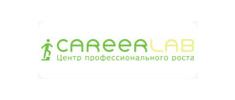Authors
Belim Svetlana Yu.
|
Degree
|
Cand. Sci. (Ped.), Associate Professor, Applied Mathematics and Fundamental Informatics Department, Omsk State Technical University |
|---|---|
|
E-mail
|
svbelim@gmail.com |
|
Location
|
Omsk, Russia |
|
Articles
|
Steganographic embedding model in files with hierarchical structureAll steganographic methods are focused on a specific container file format. Text documents with markup are the most difficult object for steganography methods. The article suggests a model for embedding structured text documents in control tags. The model uses the document tree structure and embeds into free leaf nodes. This approach adds hidden data that does not affect the display of the document. Two steganographic methods are implemented based on this model. The first method embeds hidden data into html document tags. The embedding method adds underplayed tags and style classes to free leaf nodes. The hidden data extraction method uses the embedding identifier. This role is played by the name of the new class. The name generation algorithm is based on the embedding key and hash function. The format of the identifiers matches the format of the source document names. This naming method allows the hidden message blocks to be randomly allocated to free leaf nodes. The second method embeds steganographic inserts into xml documents. Hidden data is added to the free leaf node attributes. The method requires two new attributes to execute. The optional structure describes both attributes. The format of this structure is indistinguishable from the structures present in the document. The embedding identifier is also based on the embedding key and the embedded block number. The data view uses an encryption algorithm with an additional key. Both methods use embedded data masking to counteract source code steganalysis. Steganalysis of such methods has exponential algorithmic complexity, so both methods are only applicable to large files. Read more... |



